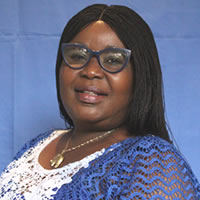There has been a general improvement in the educational sector between the periods of 2002-2005. This improvement can be realized in physical infrastructure development at the pre school level (Day Nursery) as well as enrolment at the Primary level. Currently more than 65% of the current District Population can now access primary education within 4 -5km distance. The achievement is through the collaborative efforts of Ghana Education Service and NGOs operating in the education sector.
Educational Facilities
The district has a total of 137 educational institutions comprising fifteen (24) Day Nurseries, Seventy (70) Primary, thirty-five (35) Junior Secondary Schools, five (5) Technical/ Vocational and three (3) Senior Secondary Schools (See Table 15 ). A number of NGOs have played and continue to play various roles in the development of educational infrastructure in the district.
Nevertheless, there is still much to be done in view of the increasing demand for basic education. Some of the schools seriously lack furniture as children sit on stools and stones in class. Twenty two (22) Primary Schools need pre-school facilities since it is the goal of the nation to integrate early childhood development centers in the formal education system.
At the primary school level 7 schools have average condition and need rehabilitation while three (3) need new structures (reconstruction). At the JSS level three (3) schools need rehabilitation while five classrooms blocks need reconstruction works. Dormitories and classrooms blocks are seriously required in the SSS level as well as workshops and vocational training schools for JSS and SSS leavers.
It can be observed from the table15 that between the periods of 2002 and 2005 educational infrastructure has increased by only 12 representing 10.4 % of the already existing facilities with Day Nurseries taking 8 (66%) of the newly established facilities. This is indicative of the district objective of laying a good foundation for successful basic education.
Nevertheless there is the need to pay particular attention to the improving the number of existing Primary Schools which have not changed since 2002. It is worth noting that though the number of school facilities has not increased considerably during the period, there have however been intensive rehabilitation and reconstruction works in most dilapidated schools. Most schools are currently in good conditions compared to 2002.
Spatial Distribution of Educational Facilities
The schools in the district are distributed according to eight circuits namely Daffiama, Fian, Issa, Kaleo, Nadowli, Takpo Jiang and Charipong. The number of circuits has increased by 2 since 2002; these are the Jiang and Charipong circuits. This aim is to enhance effective monitoring of school activities by circuit supervisors in view of the increased enrolment in primary schools and the need to improve upon the quality of teaching and learning.
There is a relatively fair distribution of educational facilities among the circuits as far as Pre School and basic educational facilities are concerned. With the exception of Issa that has no Day Nursery, all circuits have Nurseries, Primary and JSS. Only three circuits (Daffiama, Kaleo and Nadowli) have SSS.
School Enrolment
Currently the gross average enrolment rate in Primary schools is about 91% which is far above the national target of 88.5%. Girls’ enrolment at the primary school level is higher (97%) than that of the boys (85%). This has been the result of a number of interventions put in place by government (capitation grant) and some NGOs to arrest low enrolment and high drop out rate particularly for girls at the JSS level.
The gross enrolment at JSS level (58.4%) is not encouraging when compared to enrolment at the Primary level. Contrary to the situation in primary, enrolment for boys supersedes that of girls. This according to education authorities is due to elopement, teenage pregnancy and the unwillingness of some parents in maintaining girls in school because of the prevailing poverty and patriarchal believes among some of the people. Public sensitization and financial support is therefore paramount if girl enrolment is to be brought to desired levels in the JSS.
Staffing in Basic Schools
There has not been any significant change in the staffing situation even after the appointment and posting of the pupil teachers. Most schools in the remote areas are still poorly staffed. The current teacher-pupil ratio is 1: 45 and 1:25 at the primary and JSS respectively as compared with 1: 57 and 1:25 in 2002. The high pupil teacher ratio at the primary is due to increasing enrolment levels and the decreasing number of teachers posted to the district. The table below presents the staffing situation in both primary and JSS.
In terms training, 67% and 85 % of Primary and JSS school teachers respectively currently have the requisite qualification as compared with 57% and 94% in 2002. Thus while the situation in the primary has improved, that of the JSS has deteriorated as percentage of qualified teachers has dropped from 94% to 85%. Not withstanding this improvement at the primary level there is the need to ensure equitable and fair distribution of qualified teachers among the Primary and JSS to improve upon the quality of teaching at the Primary level where trained and competent teachers are most needed.
Generally the problems in the educational sector include:
• Inadequate staffing
• Inadequate teachers bungalow
• High dropout rate at the JSS level especially for girls.
• Inadequate logistics for monitoring
• Inadequate incentives for teachers in deprived communities
Skill and Entrepreneurial Development for Youth
The district has five (5) Vocational/technical schools that train the youth in a wide range of skills including weaving, carpentry, soap making, batik tie and dye and dressmaking. The schools are the Issa Youth Leadership Training Centre, St. Basilide Vocational/Technical School, Kaleo Vocational/Technical, St.
Theresa’s Vocational Centre and Tibani Technical.
There are also individual smock weaving and blacksmith industries in the district providing apprenticeship training to of the youth. Other existing vocations such as carpentry, hairdressing, and dressmaking also contribute in the training of the youth. A modern training workshop is currently under construction by the District Assembly.
This project after completion will provide advanced technical and vocational skills to the youth majority of whom are drop out who lack employable skills. It will also transform the economy by providing the needed technical skills for accelerating the establishment and development of small scale industrial activities.
Date Created : 11/16/2017 2:03:17 AM





 facebook
facebook twitter
twitter Youtube
Youtube TOLL FREE 0800 430 430
TOLL FREE 0800 430 430 +233 593 831 280
+233 593 831 280 GPS: GE-231-4383
GPS: GE-231-4383 info@ghanadistricts.com
info@ghanadistricts.com Box GP1044, Accra, Ghana
Box GP1044, Accra, Ghana